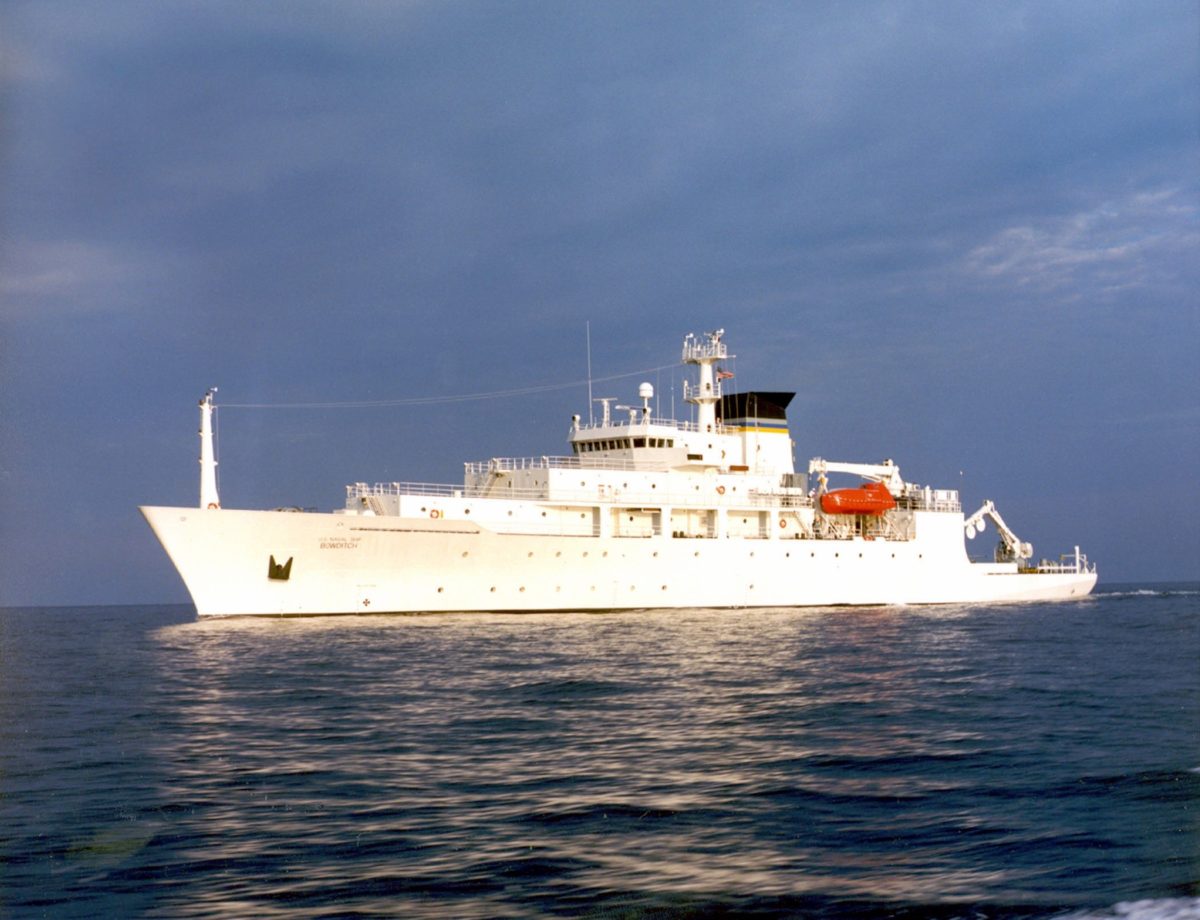Navy file photo of the Military Sealift Command’s T-AGS 60 Class Oceanographic Survey Ship, USNS Bowditch. U.S. Navy Photo
By David Tweed and Ting Shi
(Bloomberg) — For all the outrage after China seized a U.S. naval drone last week, it’s far from clear whether it will herald a new era of confrontation on the high seas between the world’s biggest economies.
China’s unprecedented move last week drew condemnations from the Pentagon, the Philippines and President-elect Donald Trump, who accused the nation of stealing the drone. China rejected that characterization on Monday, saying it made the seizure to protect shipping in the area while agreeing to return the unmanned vehicle.
Either way, further escalation is unlikely for a few reasons: China’s response has been muted, the drones are relatively common and unsophisticated, and the U.S. has little reason to send warships on what it considers peaceful operations. Moreover, the incident fell into what strategists call a gray zone, too mild to provoke a military response that risks destabilizing the region.
“Allies in the region do want to see a steadfast American presence and maintenance of the rules-based order, but they don’t want to see overly assertive or prematurely assertive American behavior that might be making things worse,” said Ashley Townshend, research fellow at the U.S. studies center at the University of Sydney.
China sought to downplay the episode on Monday, with foreign ministry spokesman Hua Chunying likening the drone to an object found on the street.
Drone Intelligence
“You have to take a look and investigate it to see if the thing belongs to one who wants it back,” Hua said.
Whether they found anything interesting remains to be seen. Underwater gliders like the one seized are used to collect environmental readings such as water temperature, salinity and information on currents for use by the military as navigation aids for ships and submarines, according to Sam Bateman, a research fellow at the Australian National Centre for Ocean Resources and Security in Wollongong.
“It was surprising the Chinese bothered to recover it,” he said. “They probably wouldn’t be able to read the data on it, and they might not get a great deal of intelligence out of it.”
Bateman, who is a former Royal Australian Navy commodore, said the incident is unlikely to prompt the U.S. to start using warships for what it considers peaceful operations.
‘Bit Naughty’
“The Chinese were probably a wee bit naughty taking this thing,” he said. “Some are making the argument that this is China demonstrating that they can do as they like in the South China Sea. That’s a stretch.”
China has long opposed American patrols and surveillance within its exclusive economic zone, while the U.S. views anything beyond 12 nautical miles as international waters in which military activities can take place.
“The issue for the United States is less about a strong response to a specific incident and more about a broader and resolute U.S. response to what is seen as a pattern of sustained Chinese assertiveness in the region,” said Andrew Scobell, a senior political scientist at RAND Corporation. Any U.S. response to future moves “would be measured and appropriate to the scope and scale of any Chinese action.”
The location of this incident, about 50 nautical miles northwest of the Philippines’s Subic Bay, raised eyebrows. Philippine Defense Secretary Delfin Lorenzana said Monday that while the matter should be resolved between China and the U.S., it was “very troubling” because it occurred within the country’s 200-nautical-mile exclusive economic zone.
No Strategy
The last major incident between the U.S. and China in the South China Sea occurred in 2013 when the USS Cowpens and a Chinese military vessel had a confrontation in the South China Sea that required maneuvering to avoid a collision. In August 2014, a Chinese fighter buzzed within 20 feet of a U.S. surveillance plane in international waters near Hainan island.
The U.S. must develop a strategy for responding to incidents involving underwater unmanned vehicles because they are likely to become more common, said Collin Koh Swee Lean, an associate research fellow at the S. Rajaratnam School of International Studies in Singapore. Even so, he said, the devices aren’t worth going to war over.
“The good thing about the device is that it was unmanned,” Koh said. “The U.S. understands they are meant to be lost.”
© 2016 Bloomberg L.P
Unlock Exclusive Insights Today!
Join the gCaptain Club for curated content, insider opinions, and vibrant community discussions.

 Join The Club
Join The Club







![A screengrab of a map showing an earthquake Mindanao, Philippines on Dec 2, 2023. (Image: US Geological Survey [USGS])](https://gcaptain.com/wp-content/uploads/2023/12/Screenshot-2023-12-02-at-10.45.17-AM-copy.png.webp)





